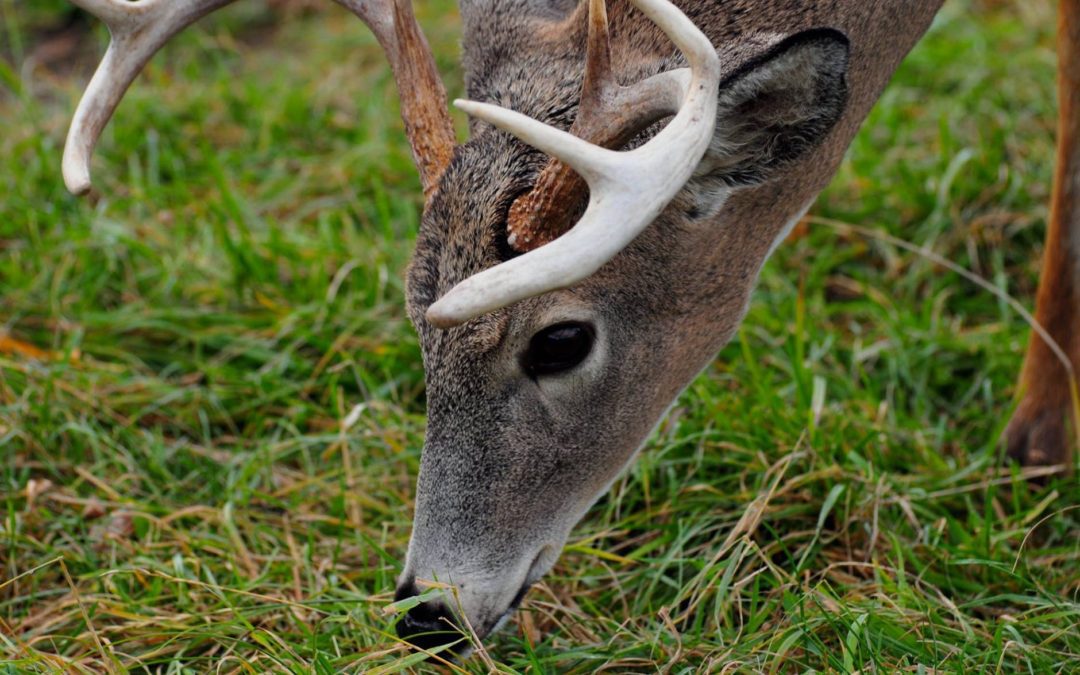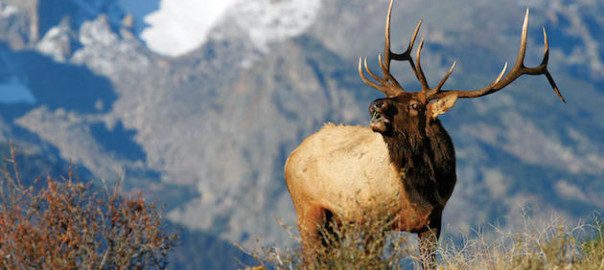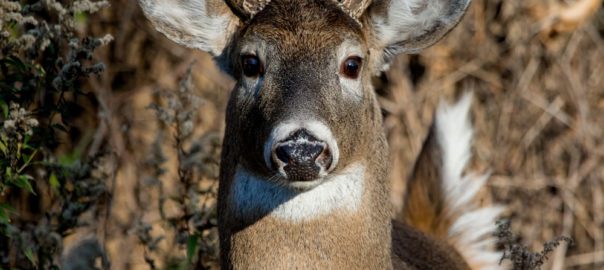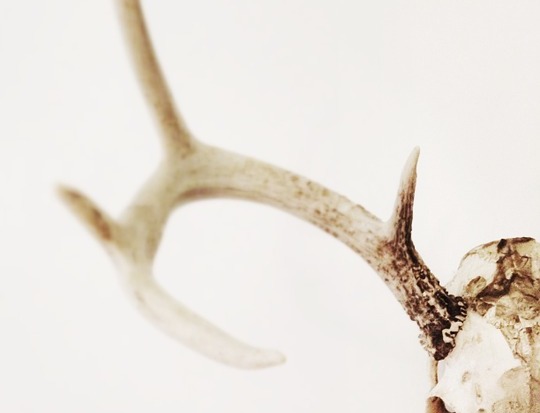2. Antlers aren’t just for bucks. About one in 10,000 female deer have antlers. Some does have increased testosterone levels, allowing antlers to grow. Most of the time, these antlers will be spongy, but on rare occasions, they can harden the same as male antlers. Most “does” with hardened antlers are actually hermaphroditic deer, meaning they have both male and female reproductive parts.
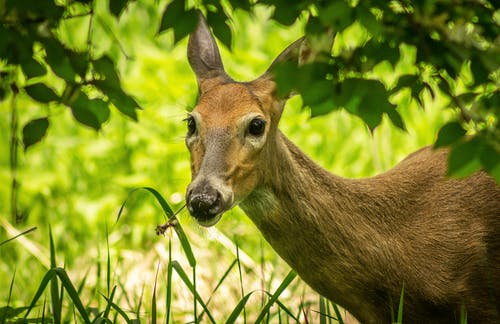
3. The antlers of a buck are the fastest growing tissue in the world. After shedding old antlers, the new antlers begin to grow almost immediately and can grow more than one inch per day! Antlers use so much calcium and phosphorus so quickly that bucks go through a temporary form of osteoporosis, stealing these minerals from their bones during antler development.
4. Antler development is controlled by three things: age, nutrition, and genetics. Most deer reach their peak antler development between 4.5 and 7.5 years of age.
5. Most bucks will have 8 to 10 antler points when they reach maturity, but there are often deer that have non-typical antler development which results in more. Deer antler mass increases with age and good nutrition, but only until maturity is reached. After that, maximum mass is controlled by genetics.
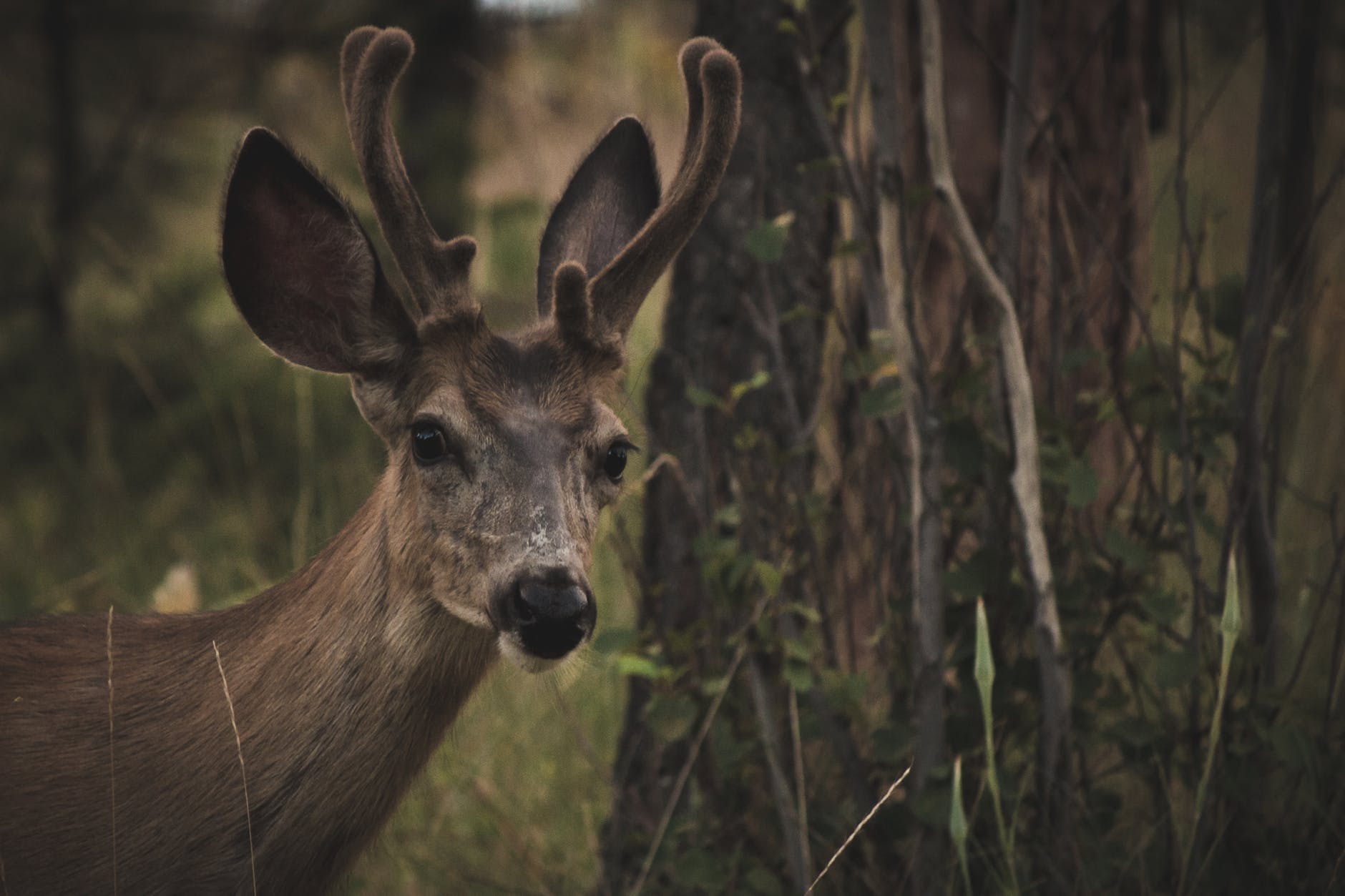
6. Once antlers harden, they’re primarily used for competition during the breeding season instead of protection like horns. Locking antlers allows males to establish the pecking order and gain breeding opportunities.
7. When it comes to deer, does make all the decisions. Does prefer larger-antlered males when looking for a potential mate. This preference is adaptive for females because larger antlers suggests increased fitness in males. Sexual selection for antlers by females is what caused antlers to evolve into such large and costly ornaments. The energy required for bucks to grow antlers each year is equivalent to a female growing twin fawns from pregnancy to weaning.
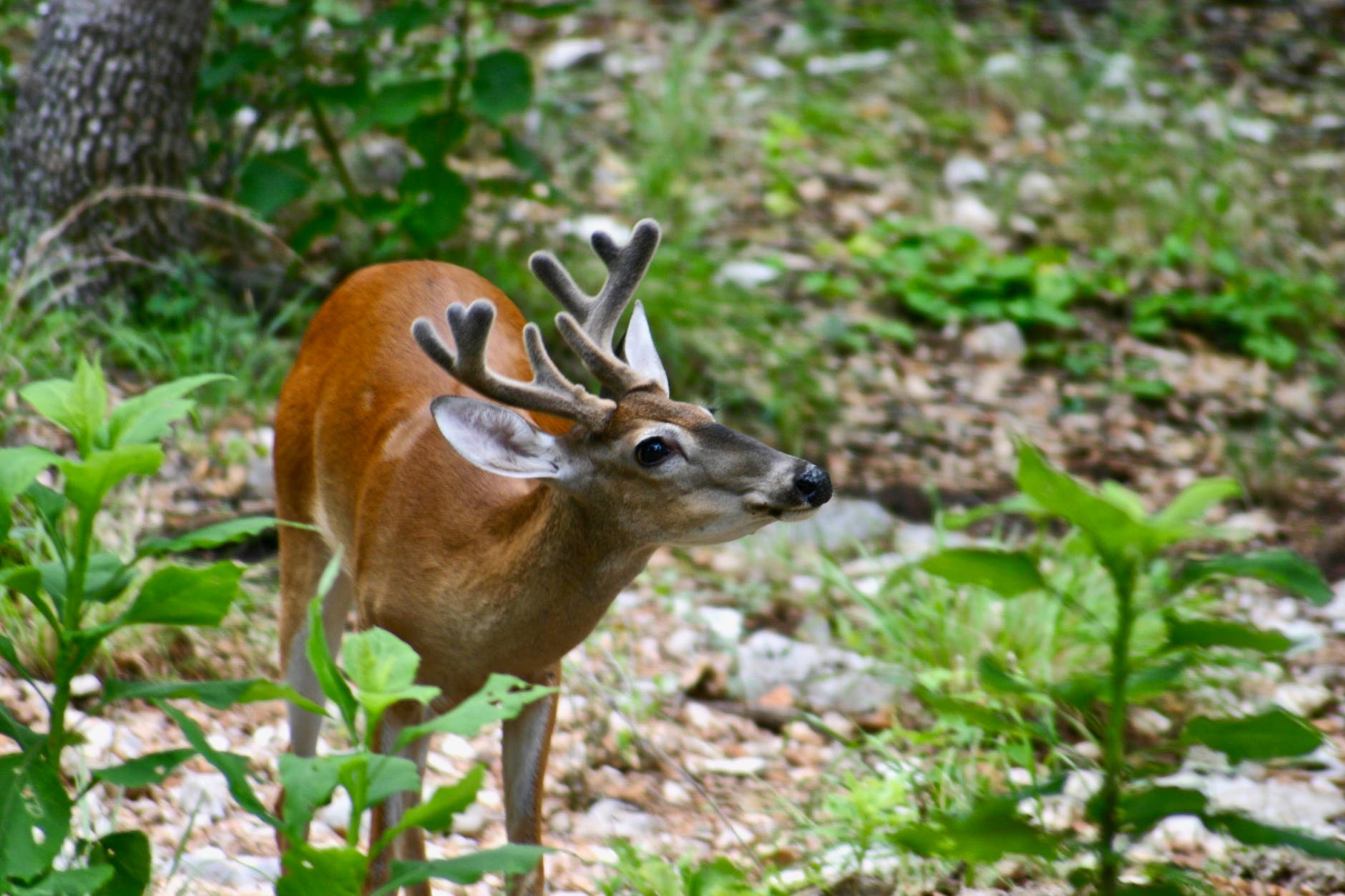
8. When food supply is reduced in quantity or quality, it results in poor antler growth. This can happen if deer herds get too large. High concentrations of deer can destroy habitat and cause loss of essential plant species. Without their preferred browse plants, deer nutrition suffers, and antlers decrease in size as a result. This is one of the many reasons regulated hunting and habitat management are so important.

